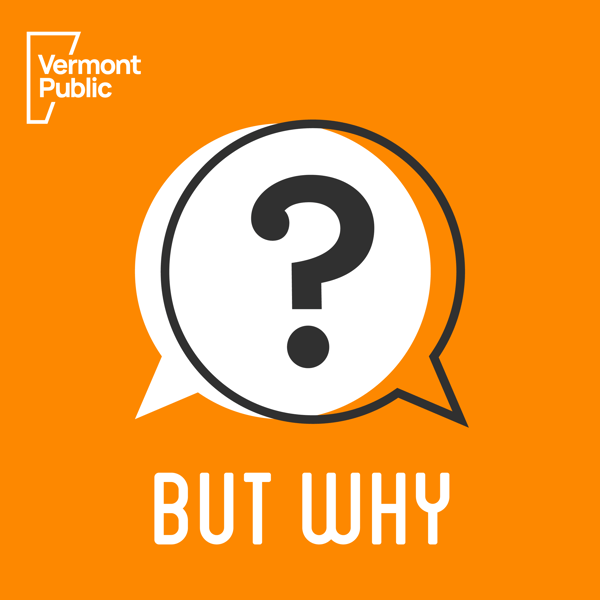How Do Apples Grow?
But Why: A Podcast for Curious Kids
Vermont Public
4.4 • 4.9K Ratings
🗓️ 8 October 2021
⏱️ 31 minutes
🧾️ Download transcript
Summary
Why do apples have stems? Why do fruits start out as flowers? How did the first apple grow when no one was there to plant its seed? Why can you make a seedless grape and not a seedless apple? Why are apples so juicy? How is apple juice made? Why are apples hard and pears soft? In this episode we take a field trip to Champlain Orchards in Shoreham, Vermont to learn more about apples. Our guides are 10-year-old Rupert Suhr, his father, Bill, and apple expert Ezekiel Goodband.
Download our learning guides: PDF | Google Slide | Transcript
Why are some fruits a flower before they’re fruit? - Grayson, 8, San Jose, California
Actually ALL fruits start as flowers (but not all flowers turn into fruit). Growing fruit is a way that some plants reproduce. Fruit is the nice ripe container that holds the seeds, which humans or animals will eat and then spread around (often through their poop), allowing new plants to grow.
But that process begins with a flower. The outer part of the flower often has beautiful colors and shapes and smells—and that’s all part of the way the plant tries to attract a bee or other pollinator:
“The flower has an ovary at the base of the petals. The petals are enticing a bee to come with the pollen from another blossom that it’s visited and there’s some nectar that the bee can collect and while the bee is doing that it’s shedding some pollen,” explains Ezekiel Goodband. “That pollen completes the information that the apple needs to start growing. So the flower is to attract the bee.”
That ovary at the base of the flower will start to grow and that will become the apple that you eat. If you look at the bottom of an apple—the opposite end of where the stem is attached to the tree—you can actually see where the flower used to be. It even kind of looks a little bit like a tiny flower.
Transcript
Click on a timestamp to play from that location
| 0:00.0 | Hi, it's me, Jane. |
| 0:03.4 | One of the things we love about making but why is that we get to hear your voices in |
| 0:07.6 | the questions you send us. |
| 0:09.6 | From the plain old Goofy, my name is Winston, I'm eight. |
| 0:15.4 | To the very sweet, and I love you. |
| 0:19.1 | And so many of you close your messages out like this. |
| 0:22.6 | Bye, I love you, show. |
| 0:24.6 | We just want to say right back at you, we are thankful for our community of curious |
| 0:29.0 | kids around the world. |
| 0:30.6 | And adults who are listening, if you value this program, please consider sending some |
| 0:34.8 | love to Vermont Public in support of BOWI. |
| 0:37.8 | We are a nonprofit supported by our listeners. |
| 0:41.0 | You can make a gift today at but whykids.org slash donate. |
| 0:45.6 | And thanks. |
| 0:49.4 | Bell DeBosco, Ashmeeds, Colonel, Candles and not. |
| 0:53.9 | Blue Paramein, Great Paramein, Bramley, Nejua Cania. |
| 0:58.9 | Oh, say that again. |
| 1:01.2 | Nejua Cania or Neidwood Sonna. |
| 1:03.4 | Neidwood Sonna, right? |
| 1:04.4 | Yeah. |
| 1:05.4 | Crimson Tophiles, Calville Blanc, Cox Orange Pippin. |
| 1:24.9 | This is But Why, a podcast for curious kids, produced by Vermont Public Radio. |
... |
Please login to see the full transcript.
Disclaimer: The podcast and artwork embedded on this page are from Vermont Public, and are the property of its owner and not affiliated with or endorsed by Tapesearch.
Generated transcripts are the property of Vermont Public and are distributed freely under the Fair Use doctrine. Transcripts generated by Tapesearch are not guaranteed to be accurate.
Copyright © Tapesearch 2025.

